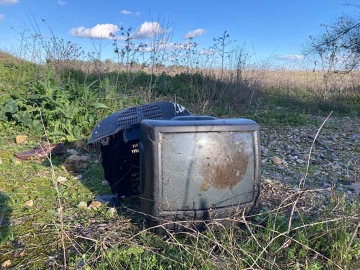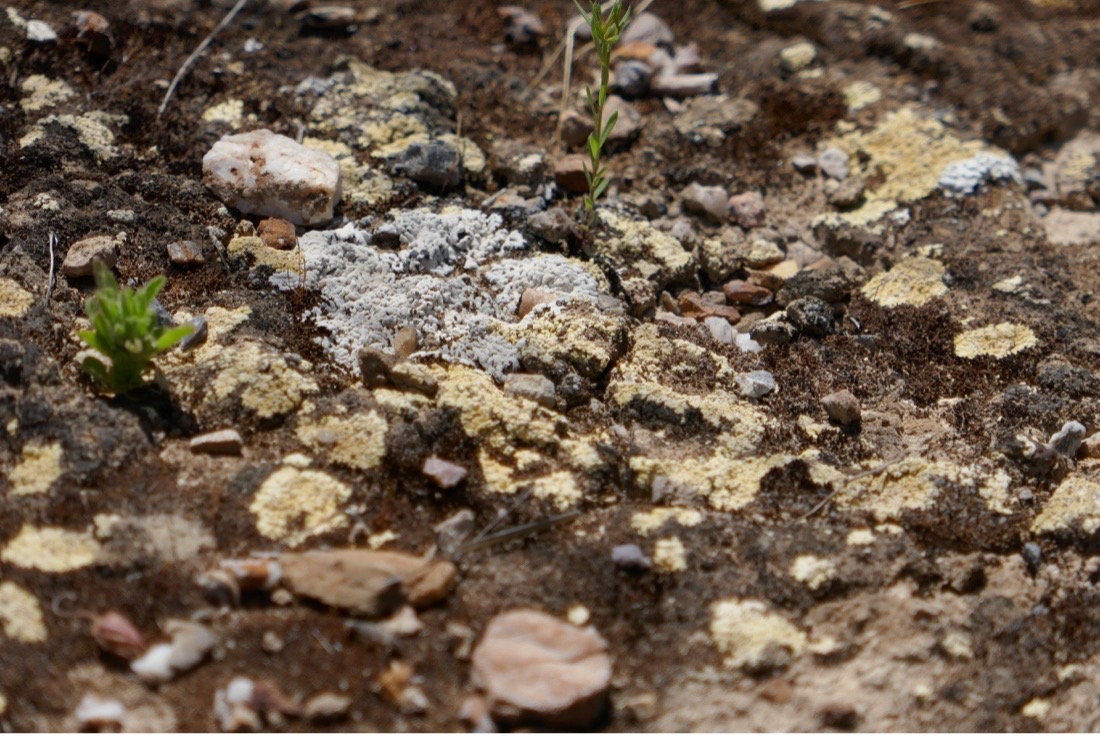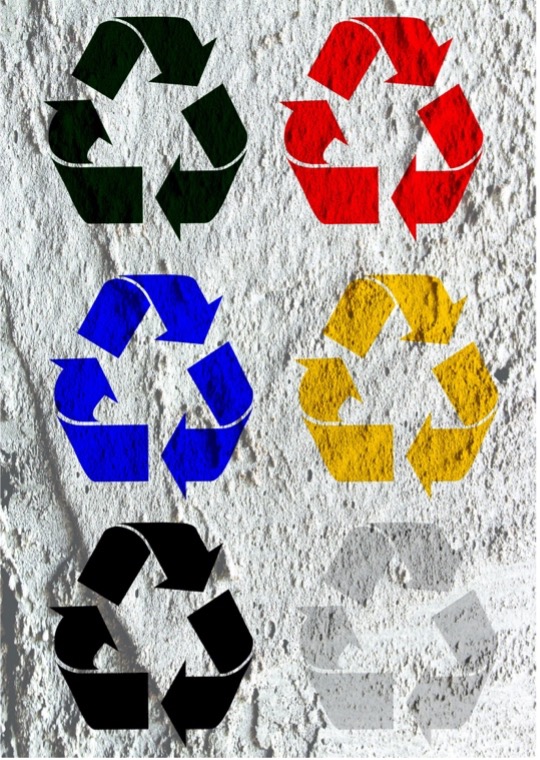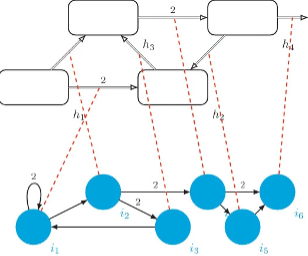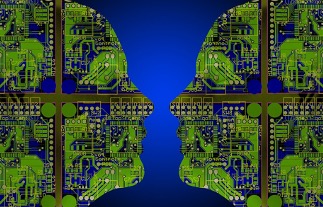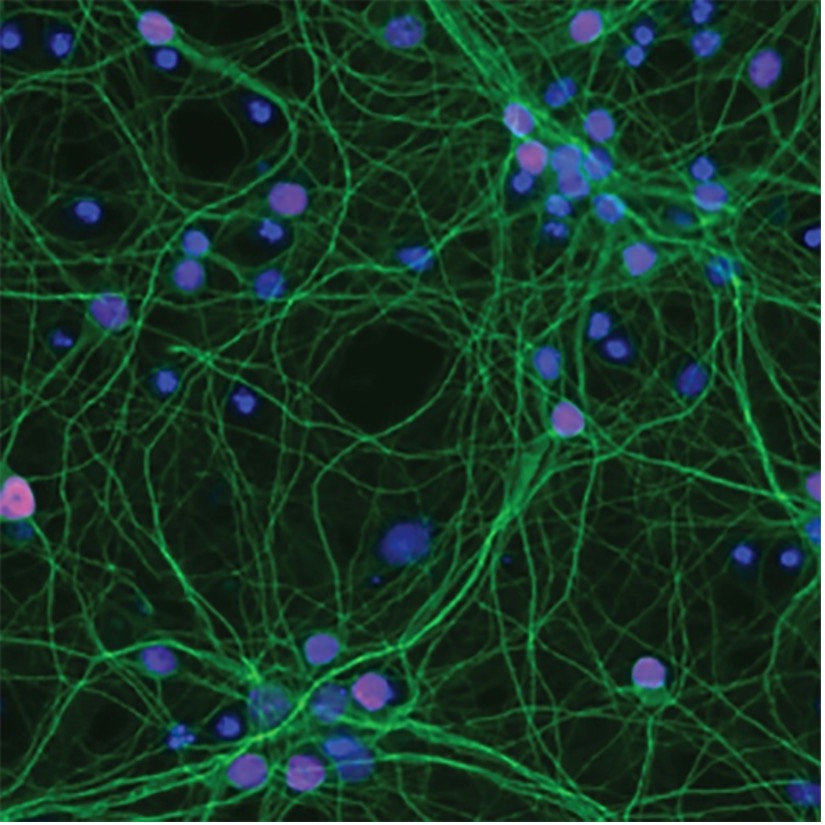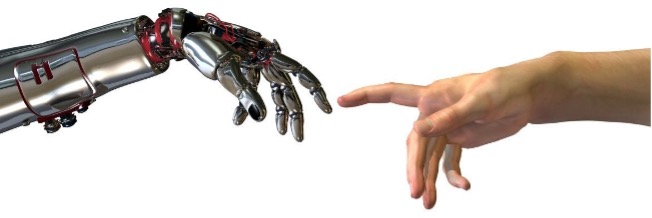SCIENTIFIC SEEDS
A SEED is a scientific topic with multidimensional inspirational information. In other words, it is any scientific topic that inspires artists in the process of creating SciArt and STEAM works. For example, a seed can be a published article, a research project, or a scientific paper. Scientific seeds do not necessarily have to be linked to the artistic world and can come from any area of scientific knowledge, from Biology or Anthropology to Artificial Intelligence or Philosophy.
Send us your proposal and our technical team will review it. Access our form to send us your work and to know a little more about your work and your artistic interests. When your piece is on our website we will let you know.
Explore seeds and find your inspiration…
MA COLLECTION
SEMILLA 21-Environment
NAME
“We live in a mixed environment: half garbage, half nature”
KEYWORDS
Garbage-in-nature, plogging
BRANCH
The area could be Ecology, but also Ethics because all issues of nature conservation, prevention and fight against pollution, ultimately contain ethical issues.
ABSTRACT
Is society divided between those who throw garbage around the field and those who collect it? Some people have collected up to 25 tons of tons in a year in Andalusia, thanks to many volunteers: https://cleansomethingfornothing.com/es/home-es/
AUTHOR(S) CONTACT:
Dr. Agustín Riscos Núñez (ariscosn@us.es)
Dr. Ignacio Pérez Hurtado de Mendoza (perezh@us.es)
SEMILLA 22-Environment
NAME
“Biocrusts, the skin of the soil”
KEYWORDS
Life in the desert, resistance
BRANCH
It can be included in ecology and, more specifically, in microbiology, biodiversity of dryland soils, soil restoration or ecohydrology.
ABSTRACT
We study its ecosystem functions in arid zones, such as its influence in reducing erosion or increasing soil fertility and stability. Conserving them is key for ecosystems in arid zones, such as deserts, due to how beneficial they are, which is why they are also used to restore soils degraded by human activity (for example: after the abandonment of a mine).
AUTHOR(S) CONTACT:
(Dra.) Beatriz Roncero Ramos (broncero@us.es)
Departamento de Biología Vegetal y Ecología
SEMILLA 23-Environment
NAME
“Camarina, the pearls of the dunes that walk on the sands”
KEYWORDS
Resist, regrowth, twisted trunks, white berries, edible pearls
BRANCH
Ecology studies the life of organisms in their natural environments and their relationship with the environment and other organisms. In dune environments, sand dynamics are also studied, which is why ecology and geomorphology are closely related.
ABSTRACT
We design sampling methods to count the individuals, their spatial location, their regrowth capacity, fruit production and which animals consume their berries.
AUTHOR(S) CONTACT:
Dra. María Cruz Díaz Antunes-Barradas (diaz@us.es)
Departamento de Biología Vegetal y Ecología
SEMILLA 24-Environment
NAME
“Pollution, a global change that affects the environmental health of the planet”
KEYWORDS
Heavy metals, phytoremediation, environmentally friendly
BRANCH
The use of phytoremediation, assisted or not by microorganisms, to mitigate the effects of contamination is a methodology that falls within the field of plant ecophysiology.
ABSTRACT
We select plant species with the potential to remove contaminants from a soil. The selection depends on the decontamination mechanism that we want to carry out. We will look for a hyperaccumulator species, if what we want is to extract the contaminant from the environment; subsequently it will be necessary to remove and process the plants so that the contaminant does not return to the environment. We will look for a phytostabilizer species if what we want is to immobilize, for example, some heavy metal in the soil (at the level of the roots of the plant) so that the contaminant is not available to any organism. Plants immobilize heavy metals by releasing exudates with heavy metal chelating properties from their roots.
AUTHOR(S) CONTACT:
Dra. Susana Redondo Gómez (susana@us.es)
Dr. Enrique Mateos Naranjo (emana@us.es)
Departamento Biología vegetal y Ecología
Grupo de Investigación Ecología Funcional Aplicada, RNM035
SEMILLA 25-Environment
NAME
“Photosynthesis, a fundamental process for the preservation of life”
KEYWORDS
Carbon dioxide, water, light, autotrophic organisms, primary production, photosystems, chlorophyll, stomata
BRANCH
Photosynthesis can be approached from different disciplines (plant physiology, biochemistry, ecology, etc.). Within the framework of functional ecology, the study of photosynthetic traits is essential for determining responses at the level of organs (leaves, green stems), organisms (plants) or ecosystems (forests).
ABSTRACT
We use the analysis of the photosynthetic function of plants as an indicator to understand their ability to adapt to the past, present and future environment.
AUTHOR(S) CONTACT:
Dr. Enrique Mateos Naranjo (emana@us.es)
Dra. Susana Redondo Gómez (susana@us.es)
Departamento Biología vegetal y Ecología
Grupo de Investigación Ecología Funcional Aplicada, RNM035
SEMILLA 26-Environment
NAME
“From biowaste to bioplastics in a circular context”
KEYWORDS
Bioproducts, Circular economy, Biowaste, Bioplastics
BRANCH
The Materials Engineering Area is a branch of engineering based on the property-structure relationships of a material to achieve a predetermined set of properties, although it is related to Chemical Engineering.
ABSTRACT
We develop biodegradable plastics (bioplastics) from agro-waste in a way that reduces their environmental impact and creates a circular economy environment: Bioplastics are used, discarded, transformed into biowaste, which is then transformed back into bioplastics.
AUTHOR(S) CONTACT:
Dr. Alberto Romero García (alromero@us.es)
Department of Chemical Engineering. Multicomponent Product Design and Technology Group
AI COLLECTION
SEMILLA 01-AI
NAME
“The anthill is more than the sum of the ants”
KEYWORDS
Optimization, emerging phenomenon, bio-inspired algorithm
BRANCH
The area of Computer Science and Artificial Intelligence is usually part of the Computer Science branch, although it is also closely related to Logic and Mathematics.
ABSTRACT
We design algorithms (something abstract in the mathematical and computer world) to solve difficult problems, based on metaphors inspired by nature in general, and for this seed in ant colonies in particular.
AUTHOR(S) CONTACT:
Dr. Agustín Riscos Núñez (ariscosn@us.es)
Dr. Ignacio Pérez Hurtado de Mendoza (perezh@us.es)
SEMILLA 02-AI
NAME
“SentIA”
KEYWORDS
Commonsense reasoning, conversational systems, Artificial Intelligence, conversational implicatures
BRANCH
Computer Science, Logic, Linguistics, Psychology, Sociology, Mathematics
ABSTRACT
The project consists of visualizing the nature of common sense (an AI challenge) through the production of interfaces that allow interactions between humans and machines to be established. For this, systems labeled as intelligent must be analysed, from a non-computing point of view.
AUTHOR(S) CONTACT:
Dr. Joaquín Borrego (jborrego@us.es)
Dr. Francisco José Quesada(jquesada@us.es)
SEMILLA 03-AI
NAME
“The complexity of the simple”
KEYWORDS
Cellular automaton, complexity, generation, evolution
BRANCH
The area of Computer Science and Artificial Intelligence is usually part of the Computer Science branch, although it is also closely related to Logic and Mathematics.
ABSTRACT
The only thing that is programmed is the rule that the cellular automaton will follow and, from there, an emergent behavior of the entire system arises that is sometimes unexpected, creating complex patterns from very simple rules, even going so far as to create interesting figures or even computers capable of solving certain problems.
AUTHOR(S) CONTACT:
Dr. David Orellana Martín (dorellana@us.es)
Departamento: Ciencias de la Computación e Inteligencia Artificial
SEMILLA 04-AI
NAME
“Viruses and machines”
KEYWORDS
Mathematics, Machines, Bio-inspired, Viruses
BRANCH
The area of Computer Science and Artificial Intelligence is usually part of the Computer Science branch, although it is also closely related to Logic and Mathematics.
ABSTRACT
Mathematical and computer concepts inspired by nature have resulted in creating new frontiers in solving real problems: neural networks, artificial intelligence, DNA-based computing, etc.
The COVID-19 pandemic has taught us, among many other things, that viruses are a powerful biological structure to draw inspiration from: what makes them so powerful? How can we abstract that power to mathematics?
AUTHOR(S) CONTACT:
Dr. Antonio Ramírez de Arellano Marrero (aramirezdearellano@us.es)
Departamento de Ciencias de la Computación e Inteligencia Artificial
SEMILLA 05-AI
NAME
“No title”
KEYWORDS
Nothing, emptiness, nihilism
BRANCH
Artificial intelligence
ABSTRACT
How Artificial Intelligence conceptualizes the void and deals with nothingness when it has no reference model.
AUTHOR(S) CONTACT:
Dr. Álvaro Romero (alvaro@us.es)
Dr. Miguel Ángel Gutiérrez (magutier@us.es)
Investigadores en Inteligencia Artificial
SEMILLA 06-AI
NAME
“AI_General”
KEYWORDS
Artificial Intelligence, Automatic Reasoning, Neuroscience, philosophy of thought?
BRANCH
Artificial intelligence
ABSTRACT
Is it possible to design systems that can supply us to face situations that clearly put us at risk and that also require a combination of knowledge, adaptation, ingenuity,… to face the unexpected?
AUTHOR(S) CONTACT:
Dra. Carmen Graciani Díaz (cgdiaz@us.es)
Departamento de Ciencias de la Computación e Inteligencia Artificial
SEMILLA 07-AI
NAME
“Complexity and indefinability”
KEYWORDS
Arithmetic theories, computational complexity, incomputability, incompleteness.
BRANCH
Mathematical logic
ABSTRACT
The work in mathematics and in general the deductive work within a science, advances to a great extent by introducing new concepts that are formally expressed together with their basic properties. New properties are then deduced through a fairly formal and to some extent automatable process. However, these formal methods have quite strong limitations. Turing’s or Godel’s results show that there are problems that we cannot solve algorithmically or truths that cannot be demonstrated in fundamental theories. Usually, this phenomenon is shown in the existence of a certain maximum level for the complexity of the notions and results that we can handle within a certain formalism. This raises the question: how can we become aware of the limits of our scientific methods? What practical implications does the existence of these limits have?
AUTHOR(S) CONTACT:
Dr. Francisco Félix Lara Martín (fflara@us.es)
Profesor de Ciencias de la Computación e Inteligencia Artificial
SEMILLA 08-AI
NAME
“The Yin Yang of Science and Technology – An Neverending Story”
(From cell computing to population dynamics of species of interest)
KEYWORDS
Cell computing, Population dynamics
BRANCH
Computer Science (more specifically, computer models), Computational modeling (of complex systems), Population dynamicss
ABSTRACT
The main idea is reflected in the linked informative talk (in the “resources” section):
- Science, in this case computer models, try to produce an advance in the ability to solve problems, with desirable characteristics in terms of efficiency, parallelism, expressiveness, etc.
- The theoretical progress of this science, for example, of cellular computing models, should ultimately lead to having real cellular machines, breaking known barriers in technology.
- On the other hand, for these current theoretical studies, the technology that we do have in electronic machines and the software that we develop with them allows us to better study and deepen this scientific branch of cellular computing. This is how this symbiosis between science and technology is illustrated.
• On the other hand, theoretical machines and their potential practical devices are general purpose, abstract machines, which might seem out of the interest of society. However, the task of these machines is precisely to provide general solutions that can later be applied to solve a multitude of real problems. Once again, this duality between the abstract and the concrete is presented, and how sometimes we must go to the most abstract to produce concrete advances in aspects of reality of the greatest interest.
AUTHOR(S) CONTACT:
Dr. Luis Valencia (lvalencia@us.es)
Profesor de Ciencias de la Computación e Inteligencia Artificial
SEMILLA 09-AI
NAME
“Exploration vs Exploitation”
KEYWORDS
Machine learning, reinforcement learning
BRANCH
The area of Computer Science and Artificial Intelligence is usually part of the Computer Science branch, although it is also closely related to Logic and Mathematics.
ABSTRACT
It is possible to design algorithms that optimize their behavior as they interact with the environment (directly or simulated), simply by analyzing the responses (or rewards) received at each moment. Some classic examples can be found in strategy games or robotics, but in recent years this has also been applied to many other areas such as autonomous driving, conversational systems or recommendation systems.
One of the key points in reinforcement learning is the balance between exploring new situations and exploiting the knowledge learned so far.
AUTHOR(S) CONTACT:
Dr. José Luis Ruiz Reina (jruiz@us.es)
Dr. Juan Galán Páez (juangalan@us.es)
Departamento de Ciencias de la Computación e Inteligencia Artificial
SEMILLA 10-AI
NAME
“Concept-factory”
KEYWORDS
Exoplanets, xenobiology, extraterrestrial life, ecosystems and environment
BRANCH
Artificial Intelligence, Computation, Logic
ABSTRACT
Concepts are a very important part of human reasoning. But are there concepts in animals? If so, then would we have the possibility to recreate them with machines? Will and freedom, apart from consciousness, add too many unknowns to the understanding of the human capacity to conceptualize the reality around us. If the animal dream hypothesis were true, then we might think that an artificial simulation is possible.
AUTHOR(S) CONTACT:
Dr. José Luis Pro Martín (jpro@us.es)
Dra. Antonia Chávez González (tchavez@us.es)
Departamento de Ciencias de la Computación e Inteligencia Artificial
SEMILLA 11-AI
NAME
“Formalization-of-knowledge”
KEYWORDS
Automatic reasoning, formalization of mathematics
BRANCH
Computer Science
ABSTRACT
The formalization of mathematics is a field in which there is a lot of pending work, both to support the development of new results, as well as to verify existing ones and develop a base of knowledge of mathematical concepts. A future system that is capable of reasoning will need logical and mathematical foundations to support its reasoning.
AUTHOR(S) CONTACT:
Dr. Francisco Jesús Martín Mateos (fjesus@us.es)
Profesor de Ciencias de la Computación e Inteligencia Artificial
Puesto de trabajo: Formalización de matemáticas y razonamiento asistido por computador
SEMILLA 12-AI
NAME
“Concept-factory”
KEYWORDS
Concept emergence, formal concept
BRANCH
Artificial intelligence
ABSTRACT
Concepts are a very important part of human reasoning. But are there concepts in animals? If so, then would we have the possibility to recreate them with machines? Will and freedom, apart from consciousness, add too many unknowns to the understanding of the human capacity to conceptualize the reality around us. If the animal dream hypothesis were true, then we might think that an artificial simulation is possible.
AUTHOR(S) CONTACT:
Dr. Jaime de Miguel Rodríguez (jdmiguel@us.es)
Ciencias de la Computación e Inteligencia Artificial
SEMILLA 13-AI
NAME
“Human and machine behavior: HUMAINT”
KEYWORDS
Machine learning, data, human behaviour, human-computer interaction, algorithm, big data, psychology
BRANCH
Artificial intelligence, machine learning, impact on people, ethics
ABSTRACT
Our research deals with the impact that algorithms have on people, on our minds and on our decisions. Algorithms can be found today in search engines, mobile applications (conversation systems such as Siri or Alexa or image analysis systems such as facial recognition), social networks or platforms (spotify, airbnb, amazon, netflix, linked in, google maps), and they help us access information and content, and they also influence us and take our time, usually on our mobile phones.
AUTHOR(S) CONTACT:
Dr. Álvaro Romero (alvaro@us.es)
Dr. Miguel Ángel Gutiérrez (magutier@us.es)
Investigadores en Inteligencia Artificial
SEMILLA 13-AI
NAME
“Intelligent machines that support children’s musical creativity”
KEYWORDS
Conversational Agents, Robots, Children, Music, Creative thinking
BRANCH
Child-Computer-Interaction, child development and music
ABSTRACT
We propose the use of Artificial Intelligence, in particular Conversational Agents, in order to support the development of children’s imagination through music. With this project we suggest the collaboration of our team which consists of scientists on conversational agents, child-robot interaction, child development and trustworthy AI, with artists of your institution, to design and develop dialogues and behaviours for an artificial agent that would support children’s creativity and, as a follow up, the evaluation of such a system. We propose to use science and art to design futuristic scenarios in which children take the advantage of artificial intelligence for the improvement of their well-being.
AUTHOR(S) CONTACT:
HOW TO CITE THE ASTER PROJECT
We would like to let you know that you can share our content for free and you do not need to contact us to request permission. We only ask that each time you share you make the following indications:
Acknowledge ASTER as the original source.
2. Acknowledge the original creator by full name, whether it is the author of an artistic work or the author of a text.
3. If shared online, include a link to the original content on ASTER’s website.
4. If any of our content is reproduced, keep the content as it appears on the ASTER website (do not modify any text or images, and do not omit any links or artist credits).
Here is an example of how you should cite both artwork and a text:
For artworks:
Author: FIRST NAME LAST NAME
Title of the artwork: TITLE OF THE ARTWORK
Source: ASTER Research Project. Promoting Art-Science-Technology-Engineering Research by using collaborative methodologies and tolos / US-1381015 – European Regional Development Fund (ERDF) and the Consejería de Transformación Económica, Industria, Conocimiento y Universidades de la Junta de Andalucía, within the Operational Program ERDF 2014-2020. / PI: Rocío García Robles / co-PI: Áurea Muñoz del Amo
Link: LINK TO THE CONTENT ON THE ASTER WEBSITE.
For texts:
Author: FIRST NAME LAST NAME
Title of the publication: TITLE OF THE PUBLICATION
Source: ASTER Research Project. Promoting Art-Science-Technology-Engineering Research by using collaborative methodologies and tolos / US-1381015 – European Regional Development Fund (ERDF) and the Consejería de Transformación Económica, Industria, Conocimiento y Universidades de la Junta de Andalucía, within the Operational Program ERDF 2014-2020.
Link: LINK TO THE CONTENT ON THE ASTER WEBSITE.
Thank you very much! If you still have any questions about how to quote us, do not hesitate to contact ASTER at info.proyectoaster@gmail.com.
